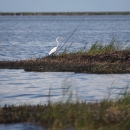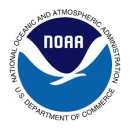The Sheboygan River and Harbor site is located on the western shore of Lake Michigan, approximately 55 miles north of Milwaukee, Wisconsin. It includes the lower 14 miles of the Sheboygan River from Sheboygan Falls to the Sheboygan Harbor.
Industrial activities along the Sheboygan River released polychlorinated biphenyls (PCBs), heavy metals, and oil residues within the waterway and the surrounding environment. As a result, the U.S. EPA designated the lower 14 miles of the Sheboygan River a Superfund Site. The U.S. EPA and the Wisconsin Department of Natural Resources are working to clean up the contaminants in the river system.
Meanwhile, the Trustees for natural resources are conducting a Natural Resource Damage Assessment (NRDA). NRDA is the process of collecting, compiling, and analyzing information and data through prescribed methodologies to determine the amount and type of restoration projects needed to compensate the public for injuries to natural resources. Trustees then seek damages (i.e., compensation in the form of money or restoration projects) from those responsible for the contamination.
The Trustees for the Site, acting on behalf of the public, include the U.S. Fish and Wildlife Service (FWS), the National Oceanic and Atmospheric Administration (NOAA), and the state of Wisconsin, represented by the Wisconsin Department of Natural Resources. The Trustees signed a Memorandum of Agreement in the spring of 2012.
In the summer of 2012, the Trustees also signed a Pre-assessment Screen (PAS) document. The purpose of a PAS is to provide a rapid review of readily available information on natural resources at the Site to ensure that there is a reasonable probability of making a successful claim before monies and efforts are expended in carrying out a natural resource damage assessment. The Trustees’ PAS for the Sheboygan River and Harbor Site documents a Trustee decision to proceed with a natural resource damage assessment based on extensive information regarding releases of hazardous substances and impacts to natural resources.
The potentially responsible parties (those parties who may be responsible for injury to natural resources and resulting damages) have been informed that the NRDA process is moving forward. The Trustees are currently engaged in the assessment planning process.
The U.S. Fish and Wildlife Service is in the process of updating webpages, so some content that was previously available is temporarily unavailable. Please contact Trina Soyk for additional information.







